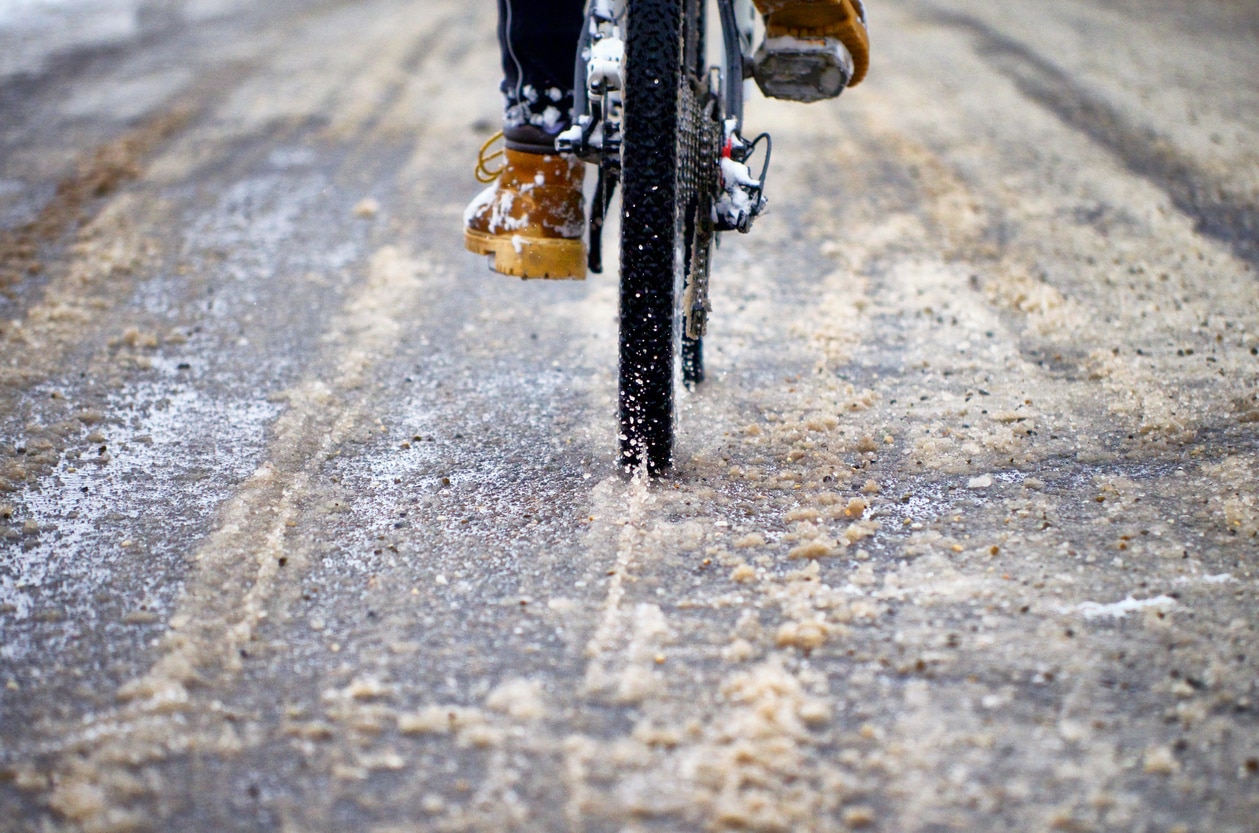
Many recreational cyclists put their bikes away when the temperature dips below freezing or snowflakes begin to fall. But if you use this form of transportation all year round, there are some special things to consider when hitting the road while braving winter weather.
The most important consideration is your bike itself as certain types of bikes are better for winter riding. The fat style bikes with larger tires are optimal for these conditions. Winter weather can be very hard on bikes, so rather than continuing to drive your primary bike, you should consider purchasing a second-hand all-purpose bike for winter weather, or drag that long-forgotten mountain bike out of the garage and put winter tires on it.
Be sure your bike is properly maintained. While it is common to do a summer check-up, you should perform another one prior to the winter if you intend to ride in these conditions. Tire pressure should be at the lowest level possible without pinching a flat tire. This level will depend a lot on your weight and might take some experimentation. If you intend to ride in the snow and icy conditions, you should invest in a pair of studded tires.
Slush and street salt can cause corrosion of your bike and break down the components a lot faster than regular wear and tear. Your bike should be washed off after each ride or, at a minimum, you should wipe it down with a dry towel or baby-wipes. A bike wash or wipe down should always be done inside your garage or home, or otherwise out of the elements. You must ensure that your bike is dry before leaving it outside overnight.
While you should never use WD40 as a bike lubricant (there are specialized lubes available at cycling shops for a bike’s moving parts) it is a substance that some cyclists recommend using on the bike frame to repel ice and grime accumulated during a winter ride. You can also spray it on your chain after the ride to get rid of excess moisture. Your bike should have installed fenders to keep as much of the slush and salt off of your body as possible.
Be sure to bundle up warmly – but beware the risk of overheating. It is recommended that you layer your clothing, starting with a warm base layer. As you ride your body temperature will rise, so it’s best not to be too warm when you first step outside. If you are, you probably have too much clothing on and will become overheated as you ride. You will probably have to experiment a few times to get the right mixture of layered clothing that allows you to make adjustments.
Your hands and feet will tend to get cold first as your body focuses on keeping its core warm. Some avid winter riders wear disposable surgical gloves under their winter gloves to create an extra vapour layer between the skin and clothes. Air activated heat packs can also be used inside shoes/boots and gloves. There are specialized winter cycling boots that can be purchased for the hardiest of outdoor winter riders.
As in driving a car or taking lengthy walks, you should always pack extra gear such as hat and gloves, a flat tire change kit and extra socks in case your socks get soaked. Of course, you should always wear a bike helmet and ensure that it will accommodate a hat. Some cyclists even wear ski helmets and ski goggles as the cold air will cause your eyes to water.
Be aware of your route and expected travel time before leaving home. Check the weather before you leave your home to ensure it is going to remain appropriate for your level of biking experience and keep in mind that if you have a return trip, the weather may change for your return. Adjust your clothing and accessories accordingly. If you are carrying liquids, ensure that they are in insulated flasks. It is not recommended that you keep a water bottle inside your coat as the layering will already make you bulky. Be prepared for any emergencies or radical worsening of weather. If ever in doubt, park your bike and take transit, or just stay in.
Winter cycling is becoming more common, but remember that some drivers may not be expecting to see you on the streets, and slick, icy roads can make steering and braking more difficult for motor vehicles and bikes alike. Snow and ice can also obscure hazards on the road. Always use separated bike lanes when they are an option, try to maintain a safe distance from cars on the road, and adjust your speed according to conditions. Biking in these types of conditions can be challenging, but by being cautious and well-prepared you can stay safe while cycling in a winter wonderland.
For more information, please contact personal injury lawyer Michael J. Henry at 416-361-0889 or mjhenry@hshlawyers.com.






